History of the Audi Company
In 2009 Audi celebrated its 100 years in business. The original company of Audi was formed by August Horch (1868-1951) on 18th November, 1899. The business started in the Ehrenfeld district of Cologne as A. Horch and Cle. When Horch decided to form a new firm by leaving the original company, in July 1909 the auto manufacturer Audi was formed. In early 1901 at Ehrenfeld, the first car developed by Horch. Later in 1902 the company moved from Ehrenfeld to Reichenbach in Saxony.
If you consider about the first Horch car of 1901, it was designed in order to give about 4 to 5 horsepower as output with its horizontal engine. An additional small piston was fitted in that, in order to absorb the vibrations of the crankshaft. It was treated as "impact-free" engine by Horch and also it featured with an alloy crankcase. This is treated as the pioneering achievement in car manufacturing.
Because of the successful design of Horch cars, it had become as necessary to expand the size of manufacturing factory. Horch decided to start with the new share-issuing company on the advice of business associates and that is called A. Horch and Cle. Motorwagen-Werke AG. This was built in the new location in Zwickau. The production of new Horch cars started in 1904 in Zwickau.
In 1906 they launched the "Sulombil", which was a three-wheeled vehicle and that was capable of delivering 3.5 horsepower with motorcycle engines. But the design of that model was not successful. Because of this in the same year, they designed the first "Original Neckarsulm Motor Car" that is capable of delivering 10 horsepower with a 1308 cc four-cylinder engine.
Horch had some misunderstanding with the supervisory board of A.Horch and Cie. Motorwagen-Werke AG in 1909 and hence he decided to leave the company, which he started. After leaving the first company, he started a new company named Horch Automobil-Werke GmbH on 16th July, 1909 in the same city. Since the legal dispute over the company name lost by Horch, he decided to rename the company as Audiwerke GmbH and it had become as effective on 25th April, 1910.
In 1913, he designed a small car with four-cylinder engine that offers 5/12 horsepower. But it had not been in the market for a long time and later it was known as "Puppchen". In 1911 Horch participated in the International Austrian Run, which was one of the most famous races of that time with an Audi car. In that first race he won the first prize and he decided to enter into the competition with Audi team. The Audi team participated in the challenge trophy from 1912 to 1914 and they won the team prize in all three years.
If you think about the right-hand drive, it was originated from the horse coachman who sat on the right-hand side of the horse. In order to make changes with the right-hand drive, Audi manufactured a car with left-hand drive in September 1921. This type of car provided drivers with the efficient experience in driving because they got the better view of traffic. It also made the drivers to pass and cross the road as safer one. By the end of 1920s, this model became as the standard in car design.
Zschopauer Motorenwerke began to manufacture the motorcycles of its own in 1922. The lightweight motorcycles that came up with the two-stroke engine, which provided 2.25 horsepower was treated as the remarkable one because of the sporting successes that offered. This motorcycle came to the notice of the people because of the triple victory of DKW team in the ADAC Reichsfahrt and victory in 1922 in the Berlin Avus race. Over the next six years the Zschopauer Motorenwerke/DKW recognized as the world's largest manufacturer and the first motorcycle of this was called as the "Reichsfahrt".
The first German-eight cylinder car namely Horch 303 Berlin was presented by Horchwerke AG of Zwickau, in 1926. It was designed with the features to go into the volume production, 60 horsepower engine, displacement of 3132 cc and a vertical shaft had been placed to drive the dual overhead camshafts. This was the design by Paul Daimler.
The majority of shares in Audiwerke AG in Zwickau acquired in August 1928 by J.S. Rasmussen. He produced large numbers of DKW small cars in 1931, with front-wheel drive. This car was designed with standard DKW two-stroke engine and wooden body covered with imitation leather. It was the basic design of most of the German small cars produced in 1930s till 1942 over 250,000 productions.
In order to manufacture the boiler fittings, the company named Zschopauer Motorenwerke was established by Rasmussen in 1904. In 1907, he began production of textiles with the textile mill in Zschopau and Saxony that he bought in 1906. The three letters of the DKW were derived from the steam-driven vehicle "Dampfkraftwagen", which was worked by Rasmussen during the First World War.
In order to create Auto Union AG, the forces of four Saxon vehicle brands such as Audi, DKW, Horch and Wandered joined together on 29th June, 1932. This group formed out a company in Chemnitz and it's manufactured from light motorcycles to luxury saloon cars, which was able to overcome all the segments of the market.
The new first standard-size passenger car with front-wheel drive was presented by Auto Union AG, in 1933 at Berlin Motor Show. The car was designed with the Wanderer six-cylinder engine and a kind of modular design principle for the first time. Auto Union AG became as one of the first manufacturers in 1938, in order to conduct systematic rollover and crash tests in the motor-vehicle industry. In order to examine about the unique rollover behaviors of each body type, various DKW models with wooden, plastic and sheet-metal body shells were tested in an efficient way.
Since most of the special vehicles that had developed and produced, they were used for military purposes too. Because of this reason, Auto Union started to supply the vehicles to armed force in the mid-1930s as an important supplier. In May 1940, civilian production was interrupted because of the outbreak of war. Later the company started to produce vehicles exclusively for military purposes.
Even though money was tight with Auto Union, it managed with the capital amount and also with the dedication of workforce and customers. In that situation Dr. Hahn, the head of sales for Auto Union addressed as the leaders made financial sacrifices and waited for us and our customers were the backbone and strength. Owners had more faith in our products and they eagerly anticipated with each and production of us.
In 1945, Saxon plants of Auto Union were dismantled by the order of the Soviet Military Administration in Germany, in order to get the reparations. The entire assets of the company were expropriated without any compensation and hence Auto Union AG of Chemnitz removed from the commercial register on 17th August, 1948.
On 3rd September 1949, a new car manufacturing plant named Auto Union GmbH was established in Ingolstadt with the help of Marshall Plan aid and loans from the Bavarian state government. In the same year the production of small and sturdy motorcycle of 125 cc and a DKW delivery had been done, based on the DKW principles of front-wheel drive and two-stroke engine. The first passenger car after the First World War was produced in August 1950 by Auto Union. The car that has been easily converted as a sedan and a four-seater Karmann designed with the name DKW Meisterklasse F 89 P. If you consider about this model, the facilities available with Ingolstadt were not enough to make the production and hence Auto Union decided to use the Rhein-metall-Borsig AG in Dusseldorf premises. Until the end of 1961, DKW vehicles were designed.
In the early 1945, NSU in Neckarsulm designed out numerous motorcycles again. In a few years the plant become as one of the most important and efficient manufacturers in this sector because they were treated as the state of the art. The motorcycle racer Wilhelm Herz designed a car with Munich-Ingolstadt autobahn that can reach up to the speed of 290 km/h. It's also designed with the help of supercharged 500 cc NSU racing motorcycle that made Wilhelm Herz to get success with new world record.
At the time of the 1953 German Motor Show, Auto Union introduced the new three-cylinder "3=6 Sonderklasse". But this model designed on the basic principles of car that had produced in 1940 in Chemnitz, in order to go into volume production. This model provided the power characteristics of six-cylinder, four-stroke engine with three-cylinder, two stroke engine and hence it named as "3=6", in order to represent the number of combustion cycles as twice.
The NSU Werke AG in Neckarsulm produced two-wheeled vehicles in the volume of 342,583, including 45,747 bicycles in 1955. Because of this NSU became as the world’s leading manufacturer in two-wheeled vehicles. Since that was the time when motorcycle euphoria reached the climax because of the increased wealth most of the people prefer to get those vehicles for their personal mode of transport. After that, the car had become as the dream of most of the people.
In 1957, after 30 years NSU again started to manufacture cars. The company decided to design the small cars, in order to satisfy the average earners and motorcycle owners. After the invention of NSU Prinz, in 1957 German Motor Show, the company started to get rid of the losses in the motorcycle market. The remaining and the majority of shares of Auto Union GmbH were acquired by Daimler-Benz AG, because of the instigation of Friedrich Karl Flick who was a leading entrepreneur on 24th April, 1958. After that, Auto Union was acted as the subsidiary of the Stuttgart-based Daimler group until the end of 1964. In the autumn of 1958, Auto Union stopped all the motorcycle production activities and started out the operation with new car plant in Ingolstadt in the summer of 1959. This was treated as one of the modern production facilities in Europe. The Auto Union Plant in Dusseldorf was bought by Daimler-Benz in 1962.
There was a sensational thing happened at the 1963 Frankfurt Motor Show, because of the open-top-two-seater NSU standard. The main feature of this small car named Wankel Spider was its design with a single-rotor rotary piston engine at the rear. From the beginning of 1950s, NSU worked together with Felix Wankel and hence the new engine designed with the concept of rotor compressed fuel/air mixture instead of a reciprocating piston.
In December 1964 and effectively on 1st January 1965, the majority of shares of Auto Union GmbH acquired by Volkswagenwerk AG by the instigation of Friedrich Karl Flick who was the leading industrialist. Because of this, at the end of 1966 Ingolstadt-based Company was fully owned by VW subsidiary. After became as the part of Volkswagen Group, Auto Union Stopped all the works with two-stroke engine. In the summer of 1965 the last DKW model F 102 presented in the name of Audi, with the four-cylinder four-stroke engine model that was developed by Daimler-Benz that was known as "medium-pressure" engine.
The new model NSU Ro 80 was designed in the category of upper mid-size in September 1967. One of the outstanding features that were available with this model was twin-rotor rotary piston engine with 115 horsepower. The modern body and the featured styling elements of this car were treated as the best at that time. This design was applied to most of the designs in the later years. Even though NSU came up with the sensational and attractive model, it was not able to make any changes with the Wankel principle.
The presentation of newly designed Audi 100 was held at the Ingolstadt City Theatre on 26th November 1968. Auto Union invited most of the dealers and the press to attend the presentation. Because of this upper mid-size car developed by chief engineer Dr. Ludwig Kraus, Audi entered into the competitive market segment in that category for the first time. This ensured out the basis for the future independence of the Audi brand in the new Audi model series, which became as possible because of the best seller of the Audi 100.
In 1969, Audi entered into the U.S. market. The Audi 80 that was the continuation of model principle of the Audi 100 was designed by Audi chief designer Ludwig Kraus in the summer of 1972. It was the car designed with the four-cylinder OHC engine. Later this engine was adopted by the Volkswagen group, which provided the highest production volume at VW. Within six years over a million models of the Audi 80 was built and sold.
Since there was an energy crisis in the early 1970s, Audi decided to design out the car in order to overcome the energy crisis and hence it launched Audi 50 that is the smallest car in the Audi model range in September 1974. Because of the high-volume engine, it was built at VW in Wolfsburg. After six months, the Audi 50 was launched on the market in the name of the VW Polo with the same model.
In March 1980 at the Geneva Motor Show, Audi standard four-wheel-drive sports coupe was designed and that made a genuine sensation among the people. This car was designed with the concepts that had been used in trucks and off-road vehicles. This was the first high-performance car with four-wheel drive named as Audi Quattro. Because of the permanent four-wheel-drive system, this model became as the successful one worldwide among all the Audi model range. The Audi 4000 with Quattro was helpful for the American motorist to get a chance to experience the German Sports sedan in 1982.
The third generation of the Audi 80 known as the B3 was presented by Audi in the autumn 1986. Compared to the Audi 100/200 model range that was released the year before, Audi 80 was designed with excellent aerodynamics, a drag coefficient of 0.29 and it was provided with the 10-year warranty against rust protection along with the galvanized body.
When the Audi Sport Quattro S1 with 598 horsepower was running its third year in 1987, it conquered the record-shattering time by Pikes Peak Hill Climb. In 1988 Audi team and the TransAm Series for Hurley Haywood proved that, Audi Quattro was able to conquer the roads less than ideal conditions and more than bad.
By considering about more than 13 years of development, in 1989 Audi was designed with refining diesel direct injection and that became as successful one by Audi engineers. This was the diesel engine used on trucks in the previous years. At the Frankfurt Motor Show in the autumn of 1989, the Audi 100 was presented and that was designed with a 2.5 liter five-cylinder TDI engine.
The new model Audi A8 was presented at the Geneva Motor Show in March 1994. This was the first model that designed with all-aluminum body. At that time, Audi introduced the new naming process for Audi models. After the new naming process, Audi 80 was known as the A4 and Audi 100 was known as the A6. The first compact class the Audi A3 was introduced in 1996. The first volume-built aluminum car Audi A2 introduced in June 2000.
When Audi A4 was named as the successor of Audi 80 in 1994, it achieved immediate success more than expected. In the U.S. market Audi comes back with the best portion of sales in 1995. Compared to the previous year, there was 44 percent improvement in the sales of Audi vehicles including the A4.
The Audi A8 that was designed as the first all-aluminum volume production car was used by American drivers. Compared to the steel designs, the aluminum designs weigh up to 40 percent less. Since aluminum loses its quality as very less during the recycling, it comes up with standard body technology as the best. The one millionth car of the Audi was sold in 1999 in the U.S. The one millionth car sale included popular models like the 4.2, S4, 2.7 T and the TT. The all-new 2002 Audi A4 was built with an innovative platform and Continuously Variable Transmission with FrontTrak and introduced in 2001.
The model of S4 Cabriolet was released in 2004 with the featured thrilling performance. In 2005 Audi designed new category of car in the name of the Audi A3 and that was designed with excellent performance, utility, design and technology. Apart from that, all the models like A6 Avant, A4 Avant, S4 and S4 Avant received the best and significant face lifts.
With the latest generation of the Audi Quattro, the Audi S4 was designed with the high-speed engine concept in 2006. It has been designed in order to offer with the 420 horsepower to provide 2250 to 7600 rpm and with the 90 percent of torque. In 2006, Audi introduced the first SUV to the U.S. market. The Audi Q7 was designed with a 350 horsepower 4.2 liter V-8 engine and the FSI direct-injection technology. It was introduced in U.S. Showrooms in June.
With the R8 mid-engine Audi designed out the new sports car and introduced that to the car market. It was featured with pioneering technology, fascinating design and superlative road behavior. Apart from these features, the aluminum space-frame body, 420 horsepower V-8 FSI engine and the permanent Quattro four-wheel drive made the model as the best efficient one. Because of the typical standards used for the quality and finish, this car is treated as the perfect one.
The Audi announced the new will back clean diesel in the name of Bluetec by combining with Volkswagen and Daimler-Chrysler in 2007. Because of the joint campaign of three car manufacturers, consumers in the U.S. came to know about the modern diesel technology that offers excellent performance, low-emissions output, high-fuel efficiency and low-maintenance.
The possibilities of TDI technology along with majestic V12 TDI power unit was demonstrated by Audi, at the North American International Auto Show in 2007. Because of the six liters twelve cylinder diesel unit, Audi Q7 V12 TDI became as the important vehicle in the sports utility segment.
With the A5 coupe Audi expanded its segment in the market as emotionally charged one, which was introduced in the 2007 Geneva Auto Show. In order to complete the new series, Audi launched S5 with the best and extra sporty offering. S5 offers the dynamic edge because of the powerful V-8 FSI engine it has and it also designed with an attractive sports design.
If you consider about the first Horch car of 1901, it was designed in order to give about 4 to 5 horsepower as output with its horizontal engine. An additional small piston was fitted in that, in order to absorb the vibrations of the crankshaft. It was treated as "impact-free" engine by Horch and also it featured with an alloy crankcase. This is treated as the pioneering achievement in car manufacturing.
Because of the successful design of Horch cars, it had become as necessary to expand the size of manufacturing factory. Horch decided to start with the new share-issuing company on the advice of business associates and that is called A. Horch and Cle. Motorwagen-Werke AG. This was built in the new location in Zwickau. The production of new Horch cars started in 1904 in Zwickau.
In 1906 they launched the "Sulombil", which was a three-wheeled vehicle and that was capable of delivering 3.5 horsepower with motorcycle engines. But the design of that model was not successful. Because of this in the same year, they designed the first "Original Neckarsulm Motor Car" that is capable of delivering 10 horsepower with a 1308 cc four-cylinder engine.
Horch had some misunderstanding with the supervisory board of A.Horch and Cie. Motorwagen-Werke AG in 1909 and hence he decided to leave the company, which he started. After leaving the first company, he started a new company named Horch Automobil-Werke GmbH on 16th July, 1909 in the same city. Since the legal dispute over the company name lost by Horch, he decided to rename the company as Audiwerke GmbH and it had become as effective on 25th April, 1910.
In 1913, he designed a small car with four-cylinder engine that offers 5/12 horsepower. But it had not been in the market for a long time and later it was known as "Puppchen". In 1911 Horch participated in the International Austrian Run, which was one of the most famous races of that time with an Audi car. In that first race he won the first prize and he decided to enter into the competition with Audi team. The Audi team participated in the challenge trophy from 1912 to 1914 and they won the team prize in all three years.
If you think about the right-hand drive, it was originated from the horse coachman who sat on the right-hand side of the horse. In order to make changes with the right-hand drive, Audi manufactured a car with left-hand drive in September 1921. This type of car provided drivers with the efficient experience in driving because they got the better view of traffic. It also made the drivers to pass and cross the road as safer one. By the end of 1920s, this model became as the standard in car design.
Zschopauer Motorenwerke began to manufacture the motorcycles of its own in 1922. The lightweight motorcycles that came up with the two-stroke engine, which provided 2.25 horsepower was treated as the remarkable one because of the sporting successes that offered. This motorcycle came to the notice of the people because of the triple victory of DKW team in the ADAC Reichsfahrt and victory in 1922 in the Berlin Avus race. Over the next six years the Zschopauer Motorenwerke/DKW recognized as the world's largest manufacturer and the first motorcycle of this was called as the "Reichsfahrt".
The first German-eight cylinder car namely Horch 303 Berlin was presented by Horchwerke AG of Zwickau, in 1926. It was designed with the features to go into the volume production, 60 horsepower engine, displacement of 3132 cc and a vertical shaft had been placed to drive the dual overhead camshafts. This was the design by Paul Daimler.
The majority of shares in Audiwerke AG in Zwickau acquired in August 1928 by J.S. Rasmussen. He produced large numbers of DKW small cars in 1931, with front-wheel drive. This car was designed with standard DKW two-stroke engine and wooden body covered with imitation leather. It was the basic design of most of the German small cars produced in 1930s till 1942 over 250,000 productions.
In order to manufacture the boiler fittings, the company named Zschopauer Motorenwerke was established by Rasmussen in 1904. In 1907, he began production of textiles with the textile mill in Zschopau and Saxony that he bought in 1906. The three letters of the DKW were derived from the steam-driven vehicle "Dampfkraftwagen", which was worked by Rasmussen during the First World War.
In order to create Auto Union AG, the forces of four Saxon vehicle brands such as Audi, DKW, Horch and Wandered joined together on 29th June, 1932. This group formed out a company in Chemnitz and it's manufactured from light motorcycles to luxury saloon cars, which was able to overcome all the segments of the market.
The new first standard-size passenger car with front-wheel drive was presented by Auto Union AG, in 1933 at Berlin Motor Show. The car was designed with the Wanderer six-cylinder engine and a kind of modular design principle for the first time. Auto Union AG became as one of the first manufacturers in 1938, in order to conduct systematic rollover and crash tests in the motor-vehicle industry. In order to examine about the unique rollover behaviors of each body type, various DKW models with wooden, plastic and sheet-metal body shells were tested in an efficient way.
Since most of the special vehicles that had developed and produced, they were used for military purposes too. Because of this reason, Auto Union started to supply the vehicles to armed force in the mid-1930s as an important supplier. In May 1940, civilian production was interrupted because of the outbreak of war. Later the company started to produce vehicles exclusively for military purposes.
Even though money was tight with Auto Union, it managed with the capital amount and also with the dedication of workforce and customers. In that situation Dr. Hahn, the head of sales for Auto Union addressed as the leaders made financial sacrifices and waited for us and our customers were the backbone and strength. Owners had more faith in our products and they eagerly anticipated with each and production of us.
In 1945, Saxon plants of Auto Union were dismantled by the order of the Soviet Military Administration in Germany, in order to get the reparations. The entire assets of the company were expropriated without any compensation and hence Auto Union AG of Chemnitz removed from the commercial register on 17th August, 1948.
On 3rd September 1949, a new car manufacturing plant named Auto Union GmbH was established in Ingolstadt with the help of Marshall Plan aid and loans from the Bavarian state government. In the same year the production of small and sturdy motorcycle of 125 cc and a DKW delivery had been done, based on the DKW principles of front-wheel drive and two-stroke engine. The first passenger car after the First World War was produced in August 1950 by Auto Union. The car that has been easily converted as a sedan and a four-seater Karmann designed with the name DKW Meisterklasse F 89 P. If you consider about this model, the facilities available with Ingolstadt were not enough to make the production and hence Auto Union decided to use the Rhein-metall-Borsig AG in Dusseldorf premises. Until the end of 1961, DKW vehicles were designed.
In the early 1945, NSU in Neckarsulm designed out numerous motorcycles again. In a few years the plant become as one of the most important and efficient manufacturers in this sector because they were treated as the state of the art. The motorcycle racer Wilhelm Herz designed a car with Munich-Ingolstadt autobahn that can reach up to the speed of 290 km/h. It's also designed with the help of supercharged 500 cc NSU racing motorcycle that made Wilhelm Herz to get success with new world record.
At the time of the 1953 German Motor Show, Auto Union introduced the new three-cylinder "3=6 Sonderklasse". But this model designed on the basic principles of car that had produced in 1940 in Chemnitz, in order to go into volume production. This model provided the power characteristics of six-cylinder, four-stroke engine with three-cylinder, two stroke engine and hence it named as "3=6", in order to represent the number of combustion cycles as twice.
The NSU Werke AG in Neckarsulm produced two-wheeled vehicles in the volume of 342,583, including 45,747 bicycles in 1955. Because of this NSU became as the world’s leading manufacturer in two-wheeled vehicles. Since that was the time when motorcycle euphoria reached the climax because of the increased wealth most of the people prefer to get those vehicles for their personal mode of transport. After that, the car had become as the dream of most of the people.
In 1957, after 30 years NSU again started to manufacture cars. The company decided to design the small cars, in order to satisfy the average earners and motorcycle owners. After the invention of NSU Prinz, in 1957 German Motor Show, the company started to get rid of the losses in the motorcycle market. The remaining and the majority of shares of Auto Union GmbH were acquired by Daimler-Benz AG, because of the instigation of Friedrich Karl Flick who was a leading entrepreneur on 24th April, 1958. After that, Auto Union was acted as the subsidiary of the Stuttgart-based Daimler group until the end of 1964. In the autumn of 1958, Auto Union stopped all the motorcycle production activities and started out the operation with new car plant in Ingolstadt in the summer of 1959. This was treated as one of the modern production facilities in Europe. The Auto Union Plant in Dusseldorf was bought by Daimler-Benz in 1962.
There was a sensational thing happened at the 1963 Frankfurt Motor Show, because of the open-top-two-seater NSU standard. The main feature of this small car named Wankel Spider was its design with a single-rotor rotary piston engine at the rear. From the beginning of 1950s, NSU worked together with Felix Wankel and hence the new engine designed with the concept of rotor compressed fuel/air mixture instead of a reciprocating piston.
In December 1964 and effectively on 1st January 1965, the majority of shares of Auto Union GmbH acquired by Volkswagenwerk AG by the instigation of Friedrich Karl Flick who was the leading industrialist. Because of this, at the end of 1966 Ingolstadt-based Company was fully owned by VW subsidiary. After became as the part of Volkswagen Group, Auto Union Stopped all the works with two-stroke engine. In the summer of 1965 the last DKW model F 102 presented in the name of Audi, with the four-cylinder four-stroke engine model that was developed by Daimler-Benz that was known as "medium-pressure" engine.
The new model NSU Ro 80 was designed in the category of upper mid-size in September 1967. One of the outstanding features that were available with this model was twin-rotor rotary piston engine with 115 horsepower. The modern body and the featured styling elements of this car were treated as the best at that time. This design was applied to most of the designs in the later years. Even though NSU came up with the sensational and attractive model, it was not able to make any changes with the Wankel principle.
The presentation of newly designed Audi 100 was held at the Ingolstadt City Theatre on 26th November 1968. Auto Union invited most of the dealers and the press to attend the presentation. Because of this upper mid-size car developed by chief engineer Dr. Ludwig Kraus, Audi entered into the competitive market segment in that category for the first time. This ensured out the basis for the future independence of the Audi brand in the new Audi model series, which became as possible because of the best seller of the Audi 100.
In 1969, Audi entered into the U.S. market. The Audi 80 that was the continuation of model principle of the Audi 100 was designed by Audi chief designer Ludwig Kraus in the summer of 1972. It was the car designed with the four-cylinder OHC engine. Later this engine was adopted by the Volkswagen group, which provided the highest production volume at VW. Within six years over a million models of the Audi 80 was built and sold.
Since there was an energy crisis in the early 1970s, Audi decided to design out the car in order to overcome the energy crisis and hence it launched Audi 50 that is the smallest car in the Audi model range in September 1974. Because of the high-volume engine, it was built at VW in Wolfsburg. After six months, the Audi 50 was launched on the market in the name of the VW Polo with the same model.
In March 1980 at the Geneva Motor Show, Audi standard four-wheel-drive sports coupe was designed and that made a genuine sensation among the people. This car was designed with the concepts that had been used in trucks and off-road vehicles. This was the first high-performance car with four-wheel drive named as Audi Quattro. Because of the permanent four-wheel-drive system, this model became as the successful one worldwide among all the Audi model range. The Audi 4000 with Quattro was helpful for the American motorist to get a chance to experience the German Sports sedan in 1982.
The third generation of the Audi 80 known as the B3 was presented by Audi in the autumn 1986. Compared to the Audi 100/200 model range that was released the year before, Audi 80 was designed with excellent aerodynamics, a drag coefficient of 0.29 and it was provided with the 10-year warranty against rust protection along with the galvanized body.
When the Audi Sport Quattro S1 with 598 horsepower was running its third year in 1987, it conquered the record-shattering time by Pikes Peak Hill Climb. In 1988 Audi team and the TransAm Series for Hurley Haywood proved that, Audi Quattro was able to conquer the roads less than ideal conditions and more than bad.
By considering about more than 13 years of development, in 1989 Audi was designed with refining diesel direct injection and that became as successful one by Audi engineers. This was the diesel engine used on trucks in the previous years. At the Frankfurt Motor Show in the autumn of 1989, the Audi 100 was presented and that was designed with a 2.5 liter five-cylinder TDI engine.
The new model Audi A8 was presented at the Geneva Motor Show in March 1994. This was the first model that designed with all-aluminum body. At that time, Audi introduced the new naming process for Audi models. After the new naming process, Audi 80 was known as the A4 and Audi 100 was known as the A6. The first compact class the Audi A3 was introduced in 1996. The first volume-built aluminum car Audi A2 introduced in June 2000.
When Audi A4 was named as the successor of Audi 80 in 1994, it achieved immediate success more than expected. In the U.S. market Audi comes back with the best portion of sales in 1995. Compared to the previous year, there was 44 percent improvement in the sales of Audi vehicles including the A4.
The Audi A8 that was designed as the first all-aluminum volume production car was used by American drivers. Compared to the steel designs, the aluminum designs weigh up to 40 percent less. Since aluminum loses its quality as very less during the recycling, it comes up with standard body technology as the best. The one millionth car of the Audi was sold in 1999 in the U.S. The one millionth car sale included popular models like the 4.2, S4, 2.7 T and the TT. The all-new 2002 Audi A4 was built with an innovative platform and Continuously Variable Transmission with FrontTrak and introduced in 2001.
The model of S4 Cabriolet was released in 2004 with the featured thrilling performance. In 2005 Audi designed new category of car in the name of the Audi A3 and that was designed with excellent performance, utility, design and technology. Apart from that, all the models like A6 Avant, A4 Avant, S4 and S4 Avant received the best and significant face lifts.
With the latest generation of the Audi Quattro, the Audi S4 was designed with the high-speed engine concept in 2006. It has been designed in order to offer with the 420 horsepower to provide 2250 to 7600 rpm and with the 90 percent of torque. In 2006, Audi introduced the first SUV to the U.S. market. The Audi Q7 was designed with a 350 horsepower 4.2 liter V-8 engine and the FSI direct-injection technology. It was introduced in U.S. Showrooms in June.
With the R8 mid-engine Audi designed out the new sports car and introduced that to the car market. It was featured with pioneering technology, fascinating design and superlative road behavior. Apart from these features, the aluminum space-frame body, 420 horsepower V-8 FSI engine and the permanent Quattro four-wheel drive made the model as the best efficient one. Because of the typical standards used for the quality and finish, this car is treated as the perfect one.
The Audi announced the new will back clean diesel in the name of Bluetec by combining with Volkswagen and Daimler-Chrysler in 2007. Because of the joint campaign of three car manufacturers, consumers in the U.S. came to know about the modern diesel technology that offers excellent performance, low-emissions output, high-fuel efficiency and low-maintenance.
The possibilities of TDI technology along with majestic V12 TDI power unit was demonstrated by Audi, at the North American International Auto Show in 2007. Because of the six liters twelve cylinder diesel unit, Audi Q7 V12 TDI became as the important vehicle in the sports utility segment.
With the A5 coupe Audi expanded its segment in the market as emotionally charged one, which was introduced in the 2007 Geneva Auto Show. In order to complete the new series, Audi launched S5 with the best and extra sporty offering. S5 offers the dynamic edge because of the powerful V-8 FSI engine it has and it also designed with an attractive sports design.
Read also about Audi - Info › Milestone ›
Latest reviews and tests of Audi automobiles
Latest Audi news
Quick cars selector
- Audi - 63
- BMW - 35
- Chevrolet - 33
- Chrysler - 25
- Citroen - 53
- Daewoo - 11
- Dodge - 5
- Ferrari - 29
- Fiat - 51
- Ford - 59
- Honda - 33
- Hyundai - 36
- Infiniti - 13
- Jaguar - 16
- Jeep - 8
- KIA - 26
- Land Rover - 13
- Lexus - 10
- Mazda - 43
- Mercedes-Benz - 62
- Mitsubishi - 45
- Nissan - 56
- Opel - 57
- Peugeot - 59
- Porsche - 15
- Renault - 62
- Skoda - 23
- SsangYong - 9
- Subaru - 27
- Suzuki - 32
- Toyota - 69
- Volkswagen - 48
- Volvo - 46
Recent commentaries
Paul I love my Chrysler GTS turbo injection 2.2 1988 februari,
My father imported this car in ...
Chrysler GTS TurboCHRISTOPHER THE VEHICLE LOOK GOOD AND WELL DESIGNED. i WILL LIKE TO OWN ONE. HOWEVER, I MAY PREFER A ...
Mitsubishi Pajero Pinin L...Mamoloko I really want a demo of Hyundai i20 2015 in red or white...pls assist,this is my dream ...
Hyundai i20 1.25 i-Motiongunasekaran- hi,
i want to contact with daewoo motars korea..Bcause i am having daewoo nxiia petrol ...
Daewoo Nexiacardro Where's the FoRd Sierra LX 2.0 1989 ...
Ford Sierra
DearCars.com © 2012•
Account•
Register•
Contact Us•
Privacy•
Disclaimer•
Sitemap•
Authorship• 0.0354
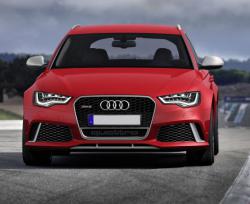 Audi RS6 Avant - Sporting Wagon
Audi RS6 Avant - Sporting Wagon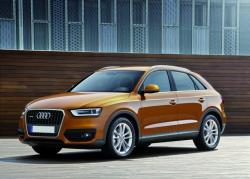 Audi Q3 2.0 TFSI Quattro Ambition - Balance in Small Doses
Audi Q3 2.0 TFSI Quattro Ambition - Balance in Small Doses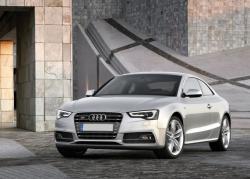 Audi S5 Review - Economical Sports Car
Audi S5 Review - Economical Sports Car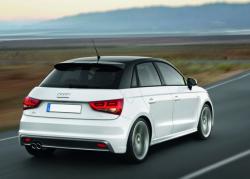 New Release of Audi A1 Sportback
New Release of Audi A1 Sportback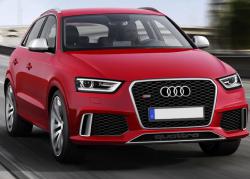 Audi Removes Wraps on Rapid RS Q3 for Geneva Motor Show
Audi Removes Wraps on Rapid RS Q3 for Geneva Motor Show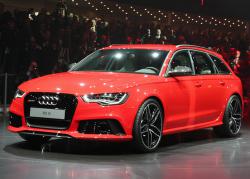 Audi RS6 Avant 2013 Hauls Ass and Then Some
Audi RS6 Avant 2013 Hauls Ass and Then Some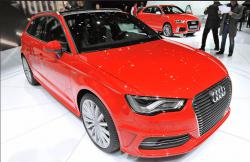 Audi Reveals A3 e-tron Plug-in Hybrid for Geneva Motor Show
Audi Reveals A3 e-tron Plug-in Hybrid for Geneva Motor Show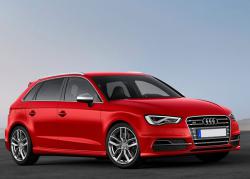 Audi S3 Sportback Steps Out for Geneva Motor Show
Audi S3 Sportback Steps Out for Geneva Motor Show